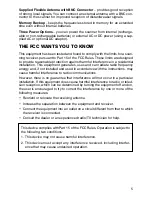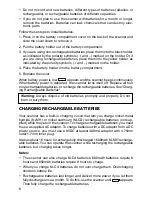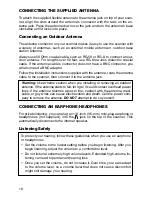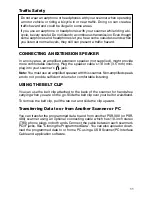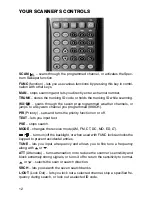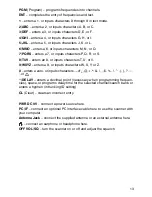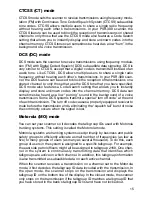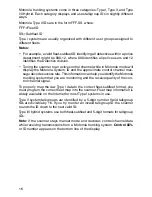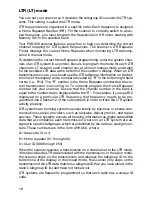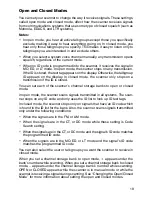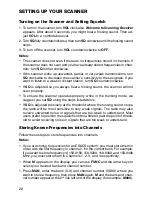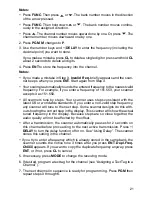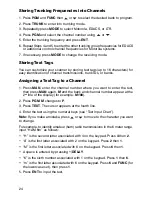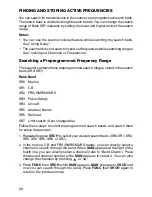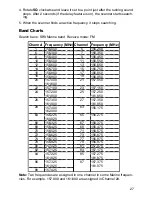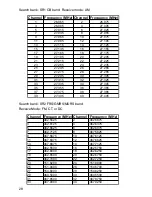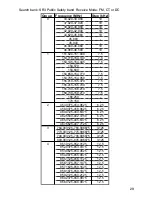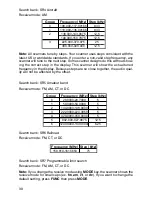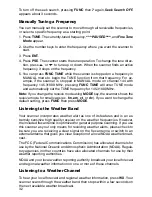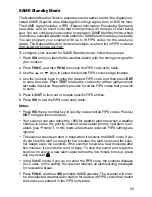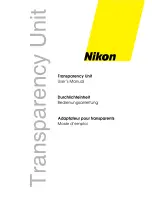
18
LTR (LT) mode
You can set your scanner so it decodes the talkgroup IDs used with LTR sys-
tems. This setting is called the LTR mode.
LTR frequencies are organized in a specific order. Each frequency is assigned
a Home Repeater Number (HR). For the scanner to correctly switch to an ac-
tive frequency, you must program the frequencies in HR order, starting with
Memory X01 in the selected bank.
Your PSR-300 scanner features a new tool to help you determine the correct
channel mapping for LTR system frequencies. The scanner’s LTR Repeater
Finder displays the current Home Repeater when monitoring LTR transmis-
sions in manual mode.
To determine the correct Home Repeater programming, enter the system chan-
nels of an LTR system in any order. Be sure to program the mode for each LTR
channel to LT. Listen to each channel one at a time in manual mode and watch
for the decoded LTR data at the bottom of the scanner’s display. When an LTR
transmission occurs, you should see the LTR talkgroup information on the bot-
tom line of the display, and a number preceded by “R” in the bottom right hand
corner (i.e., R12). The “R” number is the Home Repeater number that the cur-
rent transmission is occurring on. To correctly program this Home Repeater
number into your scanner, be sure that the channel number in the bank is
equal to the number that is displayed after the “R”. For example, if you see R12
displayed on a particular LTR frequency, that frequency needs to be pro-
grammed into Channel 12 of the current bank in order to track the LTR system
activity properly.
LTR systems are trunking systems used primarily by business or private com-
munications service providers, such as taxicabs, delivery trucks, and repair
services. These systems encode all trunking information as digital subaudible
data that accompanies each transmission. Users on an LTR system are as-
signed to specific talkgroups, which are identified by the radio as six-digit num-
bers. These numbers are in the form AHHUUU, where:
A=Area code (0 or 1)
H=Home repeater (01 through 20)
U=User ID (000 through 254)
When the scanner receives a transmission on a channel set to the LTR mode,
it first decodes the LTR data included with the transmission. In the open mode,
the scanner stops on the transmission and displays the talkgroup ID on the
bottom line of the display. In the closed mode, the scanner only stops on the
transmission if the LTR data matches a talkgroup ID that you have stored in the
bank’s talkgroup ID list and have not locked out.
LTR systems are frequently programmed so that each radio has a unique ID
code.


